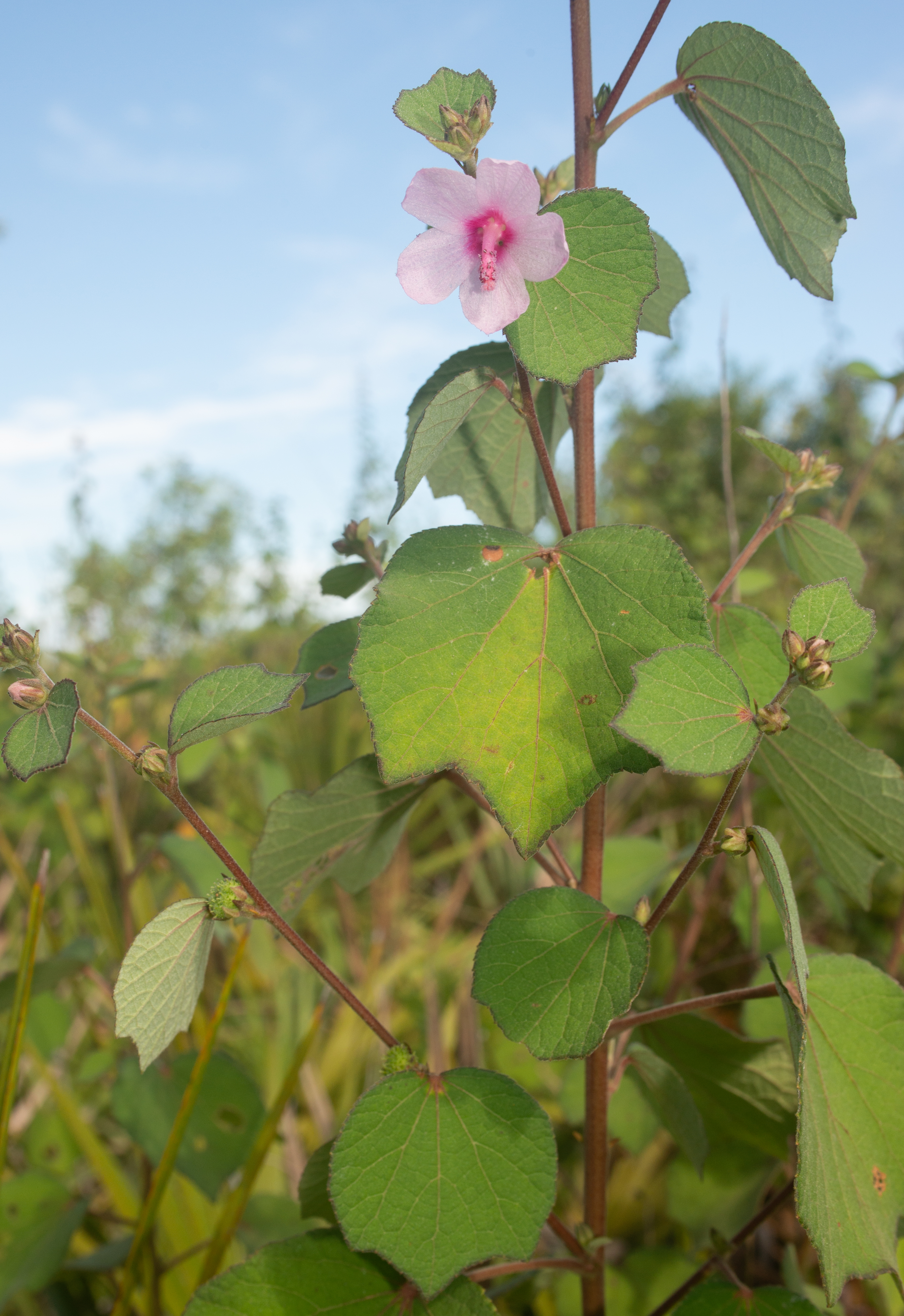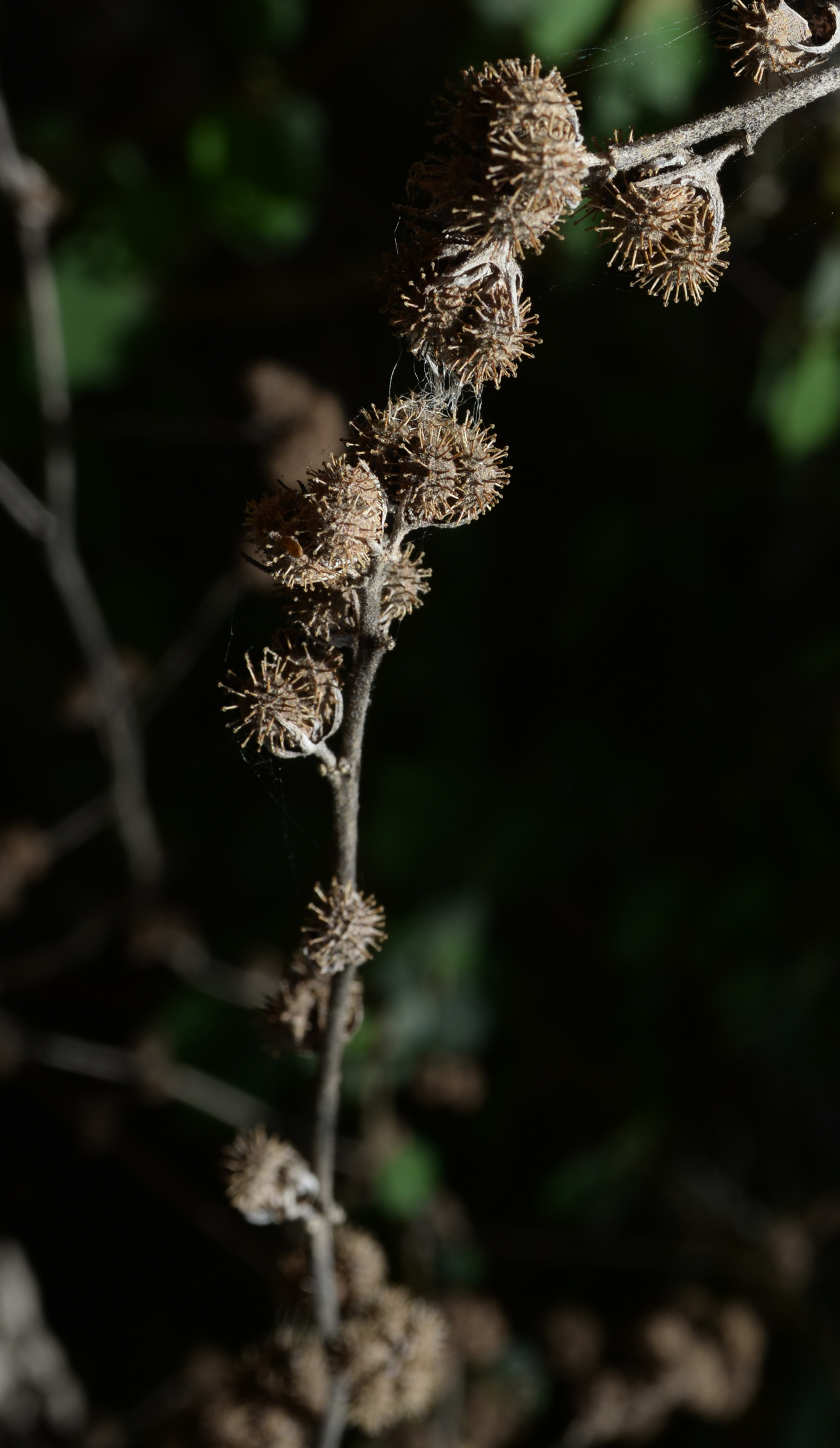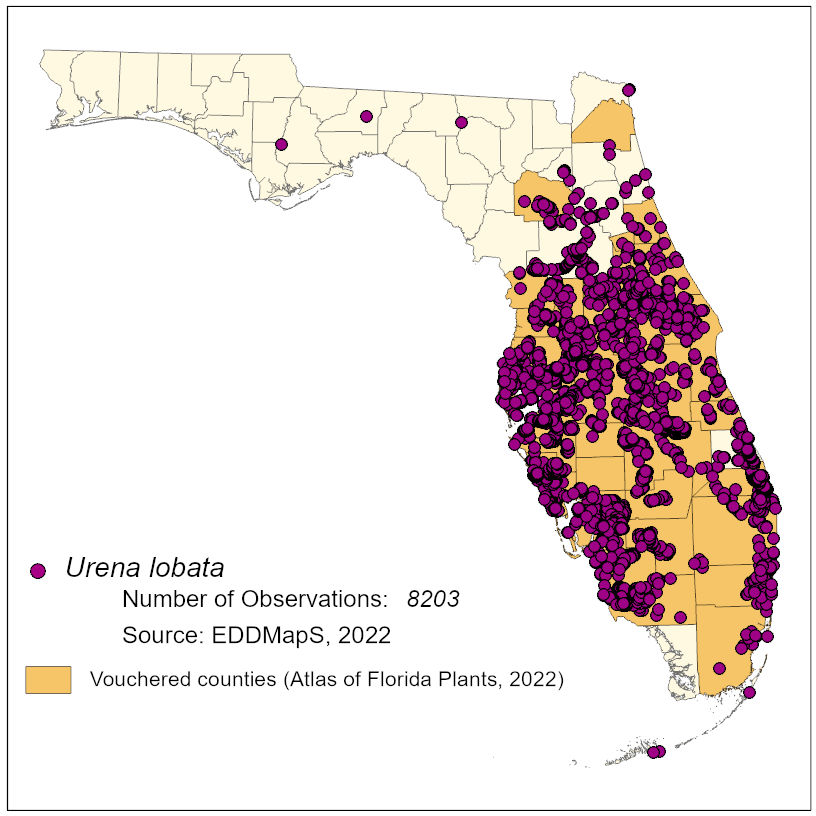Common Name: Caesar's weed
Family: Malvaceae
Common Synonyms: Urena trilobata
USDA Hardiness Zone: 9b-11
Growth Habit: Subshrub
Origin: Tropical Asia and India
FISC Category: 1
FDACS Listed Noxious Weed: No
Introduction Date: Earliest Florida specimen available vouchered in 1877
IFAS Assessment:


Large annual growing to about 3 m high. Leaves are 4 to 8 cm long, with shallow palmate lobes, and pubescent. The flowers are pink, grow in clusters, and have a tube of united stamens. Fruits are covered in hooked bristles and break into five segments at maturity, easily attaching to animals and clothing.
Widespread in peninsular Florida. Readily invades hammocks, disturbed sites, or infrequently burned natural areas.
Cattle aid the spread of this species by carrying the seeds and disturbing the soil.

Shade will help to deter growth and limit seedling establishment. Mulches or other ground cover will also prevent seed germination.
Langeland, K.A., H.M. Cherry, C.M. McCormick, K.C. Burks. 2008. Identification and Biology of Non-Native Plants in Florida's Natural Areas-Second Edition. IFAS Publication SP 257. University of Florida, Gainesville, Florida.
IFAS. 2017. Caesar's Weed, Urena lobata. http://plants.ifas.ufl.edu/plant-directory/urena-lobata/. Accessed June 13, 2017.
Wunderlin, Richard P., and Bruce F. Hansen. Guide to the Vascular Plants of Florida. 3rd ed. Gainesville, FL: U of Florida, 2011.